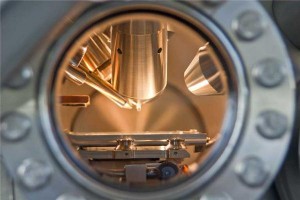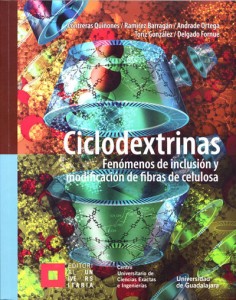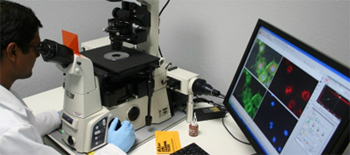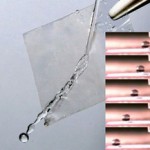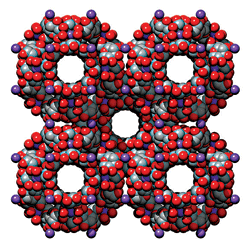Archivo de Autor
Descubren nuevos polímeros resistentes a la adhesión bacteriana
Científicos de la Universidad de Nottingham han descubierto una nueva clase de polímeros que son resistentes a la adhesión bacteriana. Estos nuevos materiales podrían conducir a una reducción significativa en las infecciones hospitalarias y en la fabricación de dispositivos médicos.
Las infecciones asociadas a los dispositivos médicos puede conducir a infecciones sistémicas y afectan a muchos dispositivos de uso común, incluyendo urinarios y catéteres venosos. En ellos las bacterias forman comunidades conocidas como biopelículas.
Los científicos demostraron que cuando los nuevos materiales se aplican a la superficie de los dispositivos médicos estos repelen las bacterias y evitan la formación de biopelículas.
El descubrimiento fue realizado con la ayuda de expertos del Instituto de Tecnología de Massachusetts (MIT) que inicialmente desarrollaron el proceso por el cual miles de polímeros únicos pueden ahora ser examinados simultáneamente.
Leer completo | Comentarios desactivados en Descubren nuevos polímeros resistentes a la adhesión bacteriana
Libro Ciclodextrinas – en español
Hablando del las ciclodextrinas hay muy poca literatura en español, este libro además de contener información de las ciclodextrinas, fenómenos de inclusión incluye una sección dedicada a la modificación de fibras de celulosa con ciclodextrinas. Muy recomendable.
Para quien esté interesado, lo puede adquirir a un precio por debajo del costo de librería.
El costo si lo adquiere por este medio es de $150.,00 (ciento cincuenta pesos mexicanos) ó USD$15.00 Interesados comunicarse con Carlos Ramirez al correo carlos.ramirez@dmcyp.cucei.udg.mx
Leer completo | Comentarios desactivados en Libro Ciclodextrinas – en español
Bacteria fabrica biodiesel con luz solar
 Los científicos han diseñado genéticamente una bacteria que segrega combustible diesel siempre que haya luz solar, agua y dióxido de carbono.
Los científicos han diseñado genéticamente una bacteria que segrega combustible diesel siempre que haya luz solar, agua y dióxido de carbono.
La compañía biotecnológica “Joule ilimitado” afirma que puede producir combustible diesel y etanol a demanda a un ritmo sin precedentes.
Los investigadores de la empresa, con sede en Cambridge, Massachusetts, dijeron que puede producir el combustible que hace funcionar los motores a reacción con los mismos ingredientes que hacen crecer la hierba.
Leer completo | Comentarios desactivados en Bacteria fabrica biodiesel con luz solar
Funcionalización de «tips» en AFM
Tip Functionalization Approaches for Molecular Recognition Measurements
Key Principles of Molecular Recognition Measurements
 Molecular recognition measurements using AFM are based on the interaction between two molecules. One molecule is attached to the tip of the AFM whereas the second molecule is attached to the sample surface (see groups A and B of Figure 1). Tip functionalization is the several chemical steps that lead to attaching the molecules A to the tip of the AFM.
Molecular recognition measurements using AFM are based on the interaction between two molecules. One molecule is attached to the tip of the AFM whereas the second molecule is attached to the sample surface (see groups A and B of Figure 1). Tip functionalization is the several chemical steps that lead to attaching the molecules A to the tip of the AFM.
.jpg)
Leer completo | Comentarios desactivados en Funcionalización de «tips» en AFM
Congreso Internacional de Nanociencia
Congreso Internacional de Nanociencia y Nanotecnología en la India
![]() El quinto Congreso Internacional de Nanociencia y Nanotecnología (International Conference on Nano Science and Technology o ICONSAT) tendrá lugar en la India, en el Hotel Taj Krishna, en Hyderabad, desde el 20 al 23 de enero de 2012.
El quinto Congreso Internacional de Nanociencia y Nanotecnología (International Conference on Nano Science and Technology o ICONSAT) tendrá lugar en la India, en el Hotel Taj Krishna, en Hyderabad, desde el 20 al 23 de enero de 2012.
El Departamento de Ciencia y Tecnología (DST) del Gobierno de la India es el patrocinador y el Centro Internacional de Investigación Avanzada en Pulvimetalurgia y Nuevos Materiales (ARCI) es el organizador de este evento, que se celebra cada dos años. La inscripción para el congreso se cerrará el 30 de noviembre de 2011.
Leer completo | Comentarios desactivados en Congreso Internacional de Nanociencia
Quitosana para terapia anti-tumores
Estudio demuestra que quitosana/IL-12 es una sustancia efectiva para inmunoterapia anti-tumores
A new study by a University of Arkansas biomedical engineer and his colleagues at the National Cancer Institute demonstrates further promise for chitosan/interleukin-12 as an effective anti-tumor immunotherapy. The researchers had already demonstrated success with chitosan/IL-12 in the treatment of superficial bladder cancer in mice, for which human clinical trials will likely begin in 2011. But recent findings revealed that injections of chitosan/IL-12 eradicated aggressive colorectal and pancreatic tumors as well.
Leer completo | Comentarios desactivados en Quitosana para terapia anti-tumores
Propiedades del biopolímero quitina
Natural polymer Chitin shows great healing properties
Chitin is a polymer very common in nature as part of animals’ and plants’ physical structures.
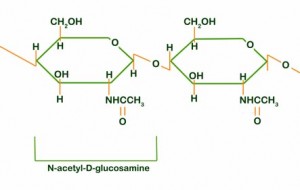 Only cellulose is more abundant than chitin, which makes this compound a highly important renewable resource that can easily be found in arthropods, insects, arachnids, molluscs, fungus and algae.
Only cellulose is more abundant than chitin, which makes this compound a highly important renewable resource that can easily be found in arthropods, insects, arachnids, molluscs, fungus and algae.
The fishing industry in Cuba generates great amounts of lobster waste, “a pollutant rich in proteins and chitin”, states Professor Carlos Andrés Peniche Covas, head of the Biopolymers Research Group, from the Biomaterials Centre of the University of Havana. This group is doing research into chitin and chitosan extraction from such waste, in collaboration with the Spanish Centre for Scientific Research (CSIC), the Complutense University in Madrid (Spain) and the Mexican Research Centre for Food and Development.
Leer completo | Comentarios desactivados en Propiedades del biopolímero quitina
Nanochips a prueba de agua
A single drop of water can be fatal to electrical circuits. To prevent water damage, current electronic devices are well sealed and packaged with polymer passivation. Researchers in Korea have now gone one step further and made water resistance a feature of the device itself by incorporating nonwetting, superhydrophobic components into the electronic device. They demonstrated this novel idea with a source/drain structure in a thin-film transistor.
Leer completo | Comentarios desactivados en Nanochips a prueba de agua
Nanopartículas a partir de crustáceos
Desarrollo de nanopartículas a partir de crustáceos para eliminar contaminantes tipo pesticidas usados en la agricultura y que por acción de la lluvia estos lixiviados llegan a los mantos acuíferos, ríos y lagos.
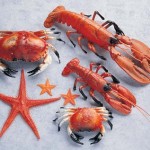 When Flavio Campagnaro bought brewing equipment from an auction at a closing Molson factory in Edmonton, Alberta, Canada, it wasn’t with the intention of brewing up batches of homemade beer. Instead he’s using the drums too cook up something far more potent: pesticides.
When Flavio Campagnaro bought brewing equipment from an auction at a closing Molson factory in Edmonton, Alberta, Canada, it wasn’t with the intention of brewing up batches of homemade beer. Instead he’s using the drums too cook up something far more potent: pesticides.
Campagnaro is the vice president of manufacturing for ViveNano, a biotech startup that’s hoping its technology can help diminish residual chemicals in agricultural runoff. Traditional pesticides, including those used on organic crops, require what ViveNano’s CEO Keith Thomas calls a “soup of chemicals” to become water-soluble streams capable of killing weeds and other pests.
And you likely know the rest of the story – it rains, and these chemicals drain from the fields into groundwater, rivers, lakes, and streams, where they wreak havoc on the ecosystem, drinking water, and oceans.
Leer completo | Comentarios desactivados en Nanopartículas a partir de crustáceos
Nanoestructuras comestibles (CD’s)
Azúcar, sal, alcohol y un poco de casualidad dirigió a un grupo de investigadores de la Universidad de Northwestern a descubir una nueva clase de nanoestructuras, que además son comestibles.
Leer completo | Comentarios desactivados en Nanoestructuras comestibles (CD’s)

